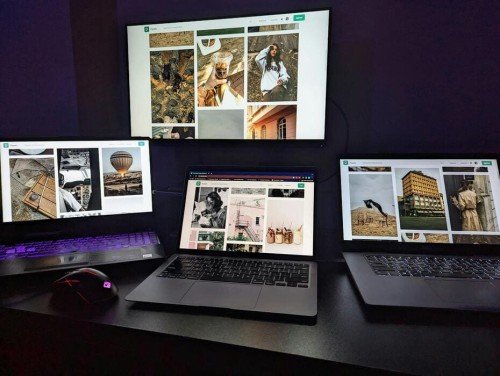
The world of visual advertising has evolved far beyond traditional billboards and printed posters. Today, brands rely heavily on digital screens, online campaigns, and interactive visual content to capture consumer attention in a fast-paced, highly connected environment. But behind every eye-catching visual lies a powerful online platform that manages, supports, and amplifies the message. Building high impact online platforms for visual ads requires a deep understanding of modern web development, user experience design, content automation, and digital strategy.
As businesses compete for visibility in saturated markets, the integration of online systems with visual advertising has become not only beneficial but essential. Strong online platforms ensure that visual campaigns are delivered consistently, updated efficiently, and optimized for performance across different digital environments. Whether the goal is brand awareness, conversion, or customer engagement, the right platform can significantly elevate the impact of visual advertising.
Why Online Platforms Are the Core of Visual Advertising
Visual advertising is no longer a standalone field. It is interconnected with websites, mobile apps, social media tools, analytics dashboards, and cloud-based content management systems. For an advertising campaign to be effective, its visual elements must be supported by an online system that allows marketers to create, schedule, distribute, and analyze every piece of content.
A high impact platform ensures:
-
Consistent branding across all screens and digital touchpoints
-
Fast updates for time-sensitive promotions
-
Remote control over multiple ads and display locations
-
Easy collaboration between design, marketing, and IT teams
-
Accurate analytics for measuring performance and ROI
Without these features, even the most visually stunning campaign will struggle to deliver meaningful results.
The Role of Web Development in Visual Ad Delivery
Modern visual ads require modern web technologies. With advertising screens and online channels becoming smarter, more interactive, and more data-driven, the web platforms behind them must evolve accordingly.
Web developers today build platforms using tools such as:
-
React, Vue, and Next.js for fast, dynamic interfaces
-
Node.js and Python for robust backend systems
-
Cloud infrastructures like AWS, Azure, and Google Cloud
-
Real-time communication technologies such as WebSockets
-
Database systems optimized for speed and scalability
These technologies allow businesses to push visual content to different locations instantly, automate updates, and manage an entire advertising network from a single dashboard.
Designing a User-Friendly Content Management Interface
Even the most powerful advertising platform will fail if it is difficult to use. Marketing teams need intuitive interfaces that help them update content quickly without relying on technical support.
A well-designed CMS for visual ads should allow users to:
-
Upload images, videos, and animations easily
-
Drag and drop content into templates
-
Create playlists and schedules
-
Adapt layouts for different screen sizes
-
Preview ads before publishing
-
Assign roles and permissions across teams
The more user-friendly the platform, the faster teams can react to market trends, seasonal events, and promotional opportunities.
Automation for Smarter Visual Campaigns
Automation is becoming a central element of digital advertising. Smart platforms can automatically switch visuals based on:
-
Time of day
-
Weather conditions
-
Customer traffic
-
Sales performance
-
Trending products
-
Live news or events
For example, a sports store can automatically promote running shoes on sunny days or winter gear when temperatures drop. A restaurant chain can display breakfast menus in the morning and switch to lunch specials at noon without manual intervention.
Automation not only improves efficiency but also enhances relevance, ensuring that audiences always see the most appropriate and appealing content.
Integration With Other Digital Tools
High impact platforms communicate with multiple external systems. API integrations allow them to pull information from e-commerce platforms, booking engines, inventory systems, social media feeds, and more.
Examples include:
-
Displaying live product availability
-
Showing real-time pricing updates
-
Publishing customer reviews instantly
-
Pulling trending posts from social media
-
Syncing promotional data across locations
When everything is connected, visual ads become dynamic, responsive, and highly personalized.
Performance, Speed, and Technical Optimization
Visual ads must load quickly and display smoothly to maintain viewer engagement. A delay of even one second can hurt the quality of the message and reduce audience impact.
To ensure the best performance, platforms should be optimized for:
-
Fast loading speeds
-
Responsive resolution adjustments
-
Efficient media compression
-
Reliable cloud delivery
-
Scalable server capacity
Technical optimization also plays a role in boosting organic online visibility. When businesses invest in quality infrastructure, they strengthen their overall digital presence, which in turn supports better rankings and credibility. For example, maintaining a strong backlinks website profile can increase the authority of the online platform and drive more users to its connected advertising materials.
Analytics and Real-Time Insights
Data is one of the greatest strengths of modern advertising. High impact online platforms provide detailed analytics that help businesses understand how well their visual ads perform.
Important metrics include:
-
Viewer engagement
-
Conversion rates
-
Device uptime and status
-
Interaction patterns
-
Content popularity
-
Regional performance
-
Time-based trends
By analyzing this data, businesses can refine their messaging, schedule content more effectively, and focus on the visuals that deliver the highest results.
Building for the Future
The future of visual advertising lies in innovation. Advancements such as 5G, IoT-enabled screens, AI-driven content recommendations, and interactive technologies will completely reshape how brands communicate visually. To remain competitive, companies must build online platforms that can grow and adapt with these new possibilities.
Investing in flexible, scalable systems today ensures that visual campaigns can become richer, smarter, and more immersive tomorrow. Businesses that embrace this direction will consistently outperform their competitors.
Most Read
Featured Posts






